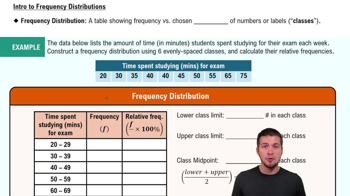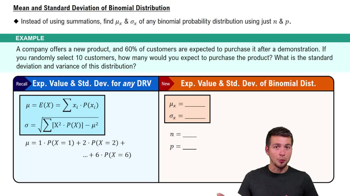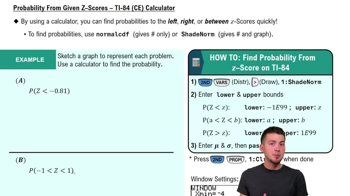Here are the essential concepts you must grasp in order to answer the question correctly.
Poisson Distribution
The Poisson distribution is a probability distribution that expresses the probability of a given number of events occurring in a fixed interval of time or space, given a known average rate of occurrence. It is particularly useful for modeling rare events, such as the number of hurricanes in a year, where the events are independent of each other.
Recommended video:
Intro to Frequency Distributions
Mean (λ) in Poisson Distribution
In the context of the Poisson distribution, the mean (denoted as λ, lambda) represents the average number of occurrences of the event in the specified interval. For this question, λ is given as 5.5, indicating that, on average, there are 5.5 hurricanes per year in the United States, which serves as a key parameter for calculating probabilities.
Recommended video:
Mean & Standard Deviation of Binomial Distribution
Calculating Probability with Poisson Formula
To find the probability of observing a specific number of events (k) in a Poisson distribution, the formula P(X = k) = (e^(-λ) * λ^k) / k! is used, where e is Euler's number (approximately 2.71828), λ is the mean, and k! is the factorial of k. This formula allows us to compute the likelihood of experiencing exactly k events, such as 10 hurricanes in a year.
Recommended video:
Probability From Given Z-Scores - TI-84 (CE) Calculator






